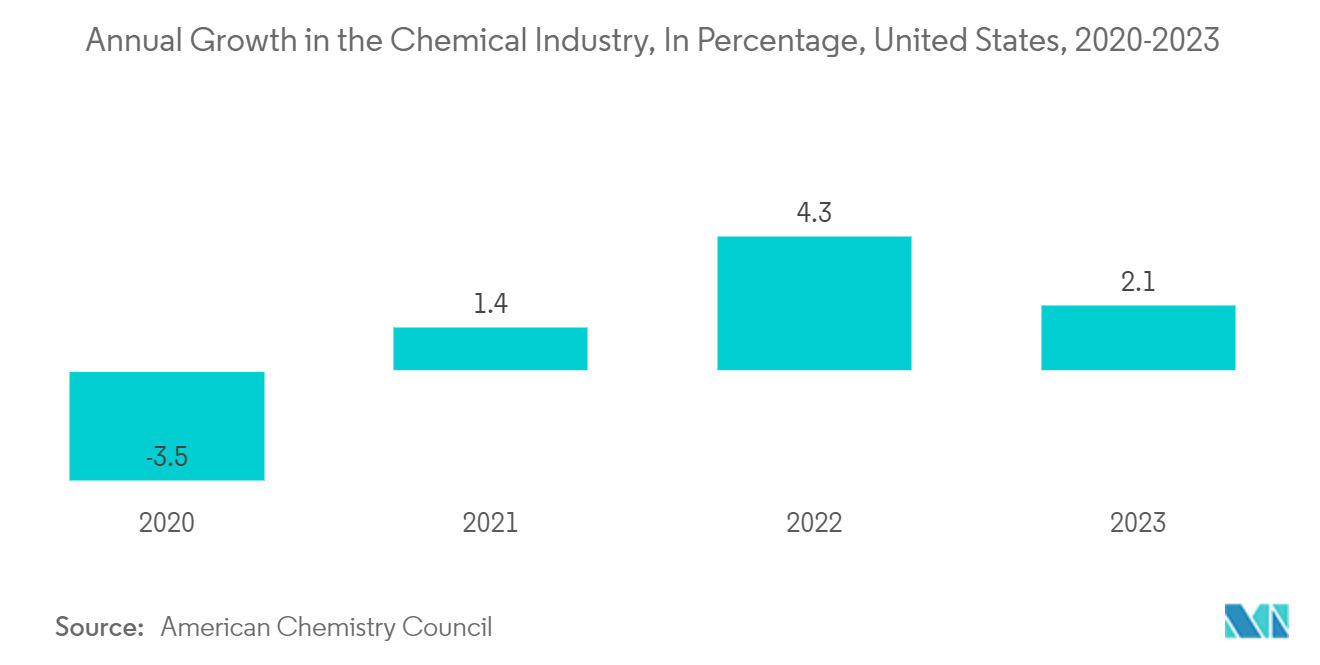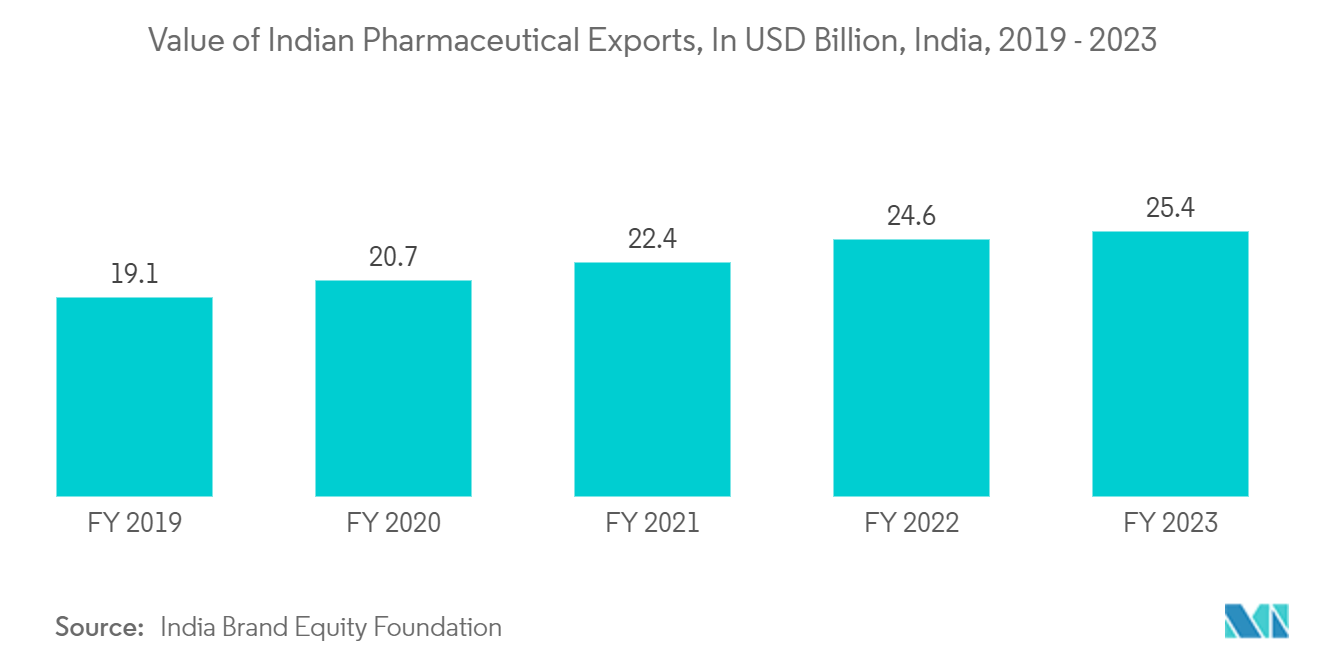Market Trends of FIBC Industry
Increasing Demand from the Chemical and Petrochemical Segment
- Due to their high strength and chemical resistance, FIBC bags are essential in safely storing and transporting chemical and petrochemical materials. FIBCs are used for packaging and transporting dangerous substances such as powder, granules, and flammable materials. FIBC bags for this industry are often equipped with anti-static features and liners to avoid product contamination.
- Made from the finest polypropylene resin, FIBC bulk bags are impervious to virtually any chemical, water, contaminant, fire, or explosion. FIBC bulk bags carry various acids and bases, including sulfuric acid, sodium hydroxide, ammonia water, and bleach. Several companies across the world provide FIBC with robust capacity. For instance, FIBC jumbo bulk bags at Palmetto Industries can hold up to 4,000 pounds of several kinds of chemicals.
- Further, globalization and improved transportation networks drive cross-border trade of chemicals and petrochemicals, which drives the market. In addition, businesses are taking advantage of cross-border trade opportunities to expand their reach, diversify their revenue sources, and optimize their supply chains.
- According to the American Chemistry Council, the chemical manufacturing sector in the United States was projected to register a CAGR of 4.3% in 2022, recovering from a decrease in production in 2020 owing to the pandemic. In 2023, the sector was expected to grow by 2.1%. Such growth in chemical production is expected to widen in the upcoming years, consequently pushing down the demand for chemical packaging.
- The chemical packaging market focuses on producing and distributing packaging solutions specifically designed for storing and transporting large volumes of chemicals. These packaging solutions are designed to meet the highest safety and regulatory requirements, guaranteeing the chemical's integrity and stability throughout its life cycle. For example, UN FIBC bags are specially designed and tested for the safe transportation of hazardous materials, as they meet the UN’s performance packaging standards. These FIBCs are specially designed and tested for the safe transportation of hazardous materials, as they meet the UN’s performance packaging standards.

Asia-Pacific is Expected to Witness Robust Growth
- The FIBC market is expected to reach a high level in the next few years due to increasing demand from Asia and the rest of the global market. In Asia-Pacific, China is expected to hold the largest market share in intermediate bulk packaging. The growing Chinese food and beverages market is expected to contribute positively to the growth of the Asia-Pacific medium bulk liner market in the coming years.
- China is one of the world’s largest economies and one of the largest trading countries in terms of the sum of its exports and imports. The country is known as the world’s factory, and its export trade for manufactured goods is again rebounding after a sudden stagnation for a brief period. With the continued growth in the export trade, the market is expected to witness robust demand for bulk and sturdy intermediate flexible bags.
- China's exports rebounded slightly in November 2023, ending a six-month streak of decline and recovering the world's second-largest economy, according to official data published in the General Administration of Customs article in December 2023. Therefore, this consistent growth in export trade across the country would be attributed to the constant demand for industrial products as the key secondary packaging products for the export trade.
- As India's exports continue to grow, especially in the areas of food processing, pharmaceuticals, and chemicals, custom bulk packaging solutions are becoming increasingly important for Indian manufacturers. According to the India Brand Equity Foundation, the value of Indian pharmaceutical exports from India increased from USD 19.1 billion in 2019 to USD 25.4 Billion in 2023. This rising export trend is expected to have created a bolstered demand for bulk FIBC across the market.
- Governments are encouraging the use of recyclable materials for packaging in India, which is something that FIBCs can help with. There is an increasing demand for customized storage and transportation solutions for various industries, and the lack of skilled labor means that more and more FIBCs are being used due to their ease of handling and cost-effectiveness.
- According to the President of the Indian Flexible Intermediate Bulk Container Association (IFIBCA), since the inception of FIBCA, the country produced around 10,000 tons of FIBCs per year. At present, it produces 400,000 tons per year. India is one of the largest exporters of FIBCs in the world, including Europe, and the United States is one of the largest importers. The growth in production is expected to increase between 2024 and 2029 with the rising demand across the global market.


